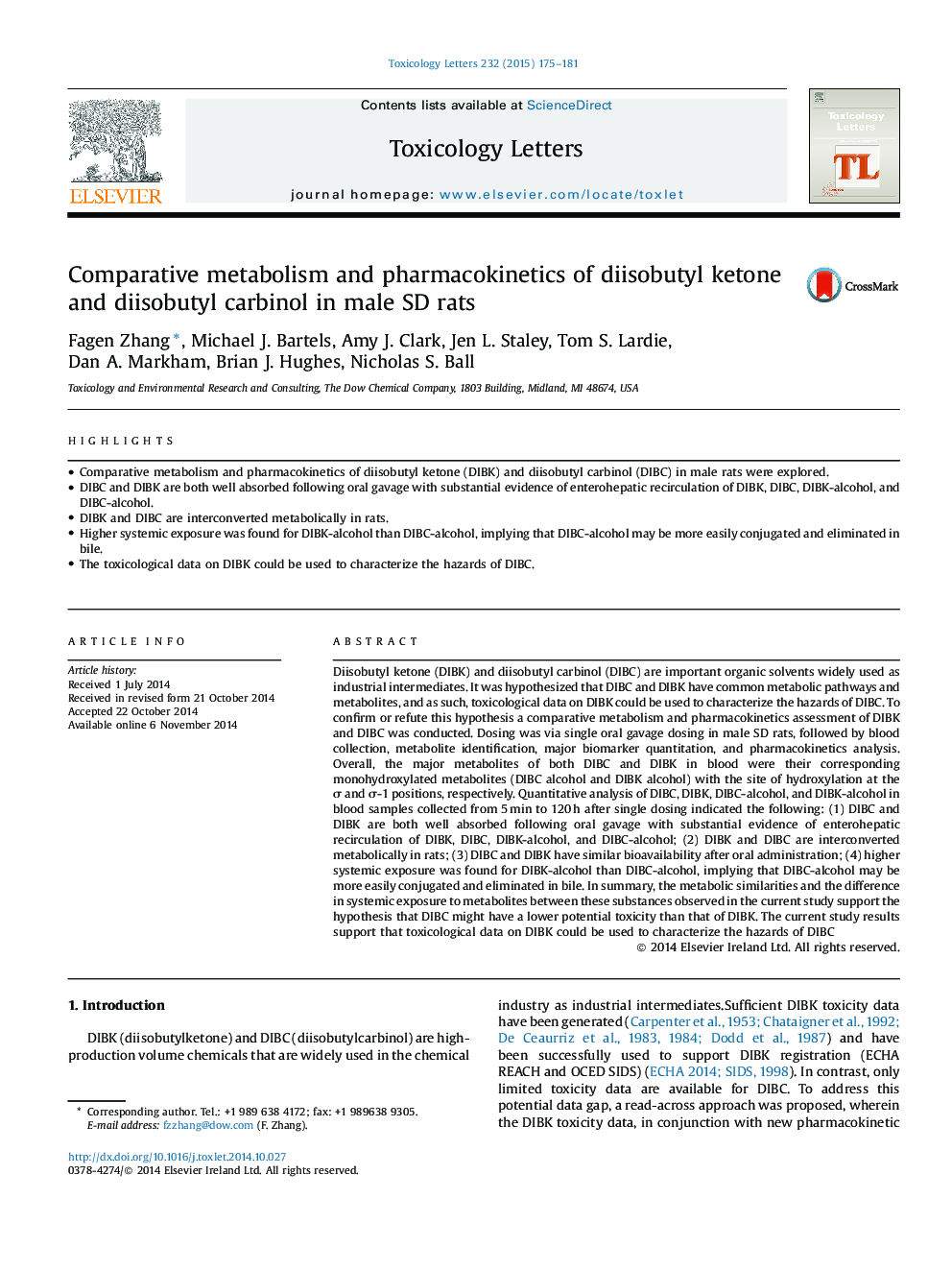| کد مقاله | کد نشریه | سال انتشار | مقاله انگلیسی | نسخه تمام متن |
|---|---|---|---|---|
| 5860047 | 1133164 | 2015 | 7 صفحه PDF | دانلود رایگان |
- Comparative metabolism and pharmacokinetics of diisobutyl ketone (DIBK) and diisobutyl carbinol (DIBC) in male rats were explored.
- DIBC and DIBK are both well absorbed following oral gavage with substantial evidence of enterohepatic recirculation of DIBK, DIBC, DIBK-alcohol, and DIBC-alcohol.
- DIBK and DIBC are interconverted metabolically in rats.
- Higher systemic exposure was found for DIBK-alcohol than DIBC-alcohol, implying that DIBC-alcohol may be more easily conjugated and eliminated in bile.
- The toxicological data on DIBK could be used to characterize the hazards of DIBC.
Diisobutyl ketone (DIBK) and diisobutyl carbinol (DIBC) are important organic solvents widely used as industrial intermediates. It was hypothesized that DIBC and DIBK have common metabolic pathways and metabolites, and as such, toxicological data on DIBK could be used to characterize the hazards of DIBC. To confirm or refute this hypothesis a comparative metabolism and pharmacokinetics assessment of DIBK and DIBC was conducted. Dosing was via single oral gavage dosing in male SD rats, followed by blood collection, metabolite identification, major biomarker quantitation, and pharmacokinetics analysis. Overall, the major metabolites of both DIBC and DIBK in blood were their corresponding monohydroxylated metabolites (DIBC alcohol and DIBK alcohol) with the site of hydroxylation at the Ï and Ï-1 positions, respectively. Quantitative analysis of DIBC, DIBK, DIBC-alcohol, and DIBK-alcohol in blood samples collected from 5Â min to 120Â h after single dosing indicated the following: (1) DIBC and DIBK are both well absorbed following oral gavage with substantial evidence of enterohepatic recirculation of DIBK, DIBC, DIBK-alcohol, and DIBC-alcohol; (2) DIBK and DIBC are interconverted metabolically in rats; (3) DIBC and DIBK have similar bioavailability after oral administration; (4) higher systemic exposure was found for DIBK-alcohol than DIBC-alcohol, implying that DIBC-alcohol may be more easily conjugated and eliminated in bile. In summary, the metabolic similarities and the difference in systemic exposure to metabolites between these substances observed in the current study support the hypothesis that DIBC might have a lower potential toxicity than that of DIBK. The current study results support that toxicological data on DIBK could be used to characterize the hazards of DIBC
Journal: Toxicology Letters - Volume 232, Issue 1, 5 January 2015, Pages 175-181
